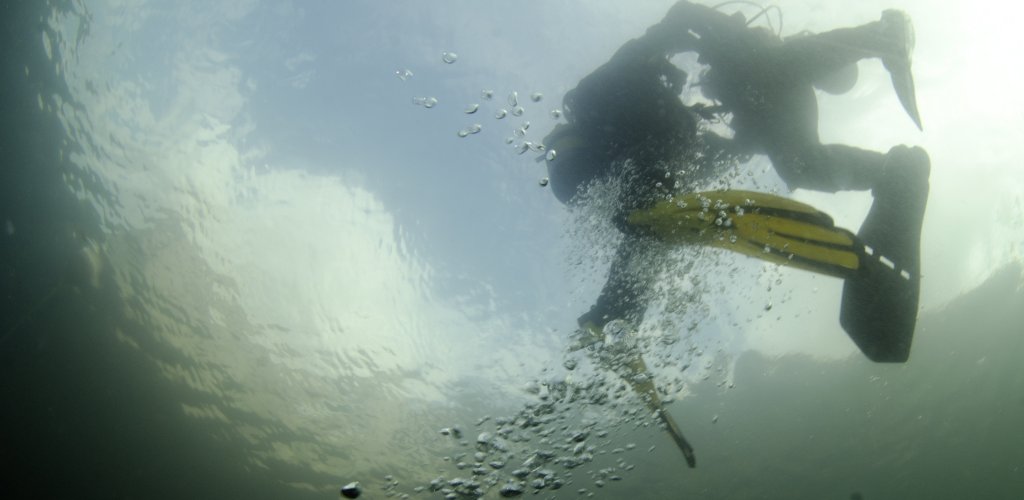
At least you had the ‘best’ sort of dive on which to experience such a problem – shallow and with a good redundancy in your equipment. Luckily BSAC teaches how to manage free-flowing regulators as part of its core training, so hopefully even new divers would fall back on their training ‘muscle memory’.
The options are to either safely ascend breathing the free flowing gas, switch to the redundancy of an independent cylinder or their buddy’s alternate second stage to then safely end the dive. This is why thorough training with a good instructor is paramount, and regular skill practice makes all the difference so your training can kick in during times of high stress.
As Ian describes, if an empty cylinder was underwater in a tub before being filled, it could take in water, possibly the 1.5 litres that was found. Or if the gas-filling whip had been screwed on underwater, then water could also have been forced in, albeit a smaller quantity, as it would have only been water trapped in the hose, connector and valve opening.
Having consulted some industry experts, some alternative explanations have been suggested to me. One is that water can enter during a free flowing regulator if a valve is not shut down in time. This could account for a volume such as 1.5 litres. Water can also enter a first stage if the purge valve is pushed underwater when a cylinder is not turned on. However, any gas in the tank would clear the water before it entered the cylinder.
Commercial compressors are legally required to get their gas analysed every three months, and shops should not take offence if you ask to see their certificate. If a filter in the compressor has not been changed as per the manufacturer’s instructions, then water from the compressed gas can enter a cylinder. It might not create such a large volume of water inside the cylinder, but it could lead to the formation of rust. Equally, a filter in need of changing could also allow other particles and contaminants to enter a cylinder.
Dive equipment is our life support underwater, so we should not hesitate to ask to see certification over the maintenance of compressors. On an equipment maintenance course I had a go at lifting a cylinder that had water in it. I could feel a definite weight difference. Though if you have no reason to question your kit, you might have just assumed you are having a ‘weak’ day.
If you are harbouring suspicions about your cylinder, you could always weigh it, as they have their correct weight stamped on them. I could also hear and feel sloshing, even while it was upright.
When moving your kit, do take time to consider if your ‘diver-senses’ feel as if something isn’t quite right; it could be your subconscious picking up on the subtle weight change or the feeling of liquid sloshing in the cylinder.
If you want to learn more about how to look after your dive kit and troubleshoot potential issues, BSAC offers branch and regional SDCs in equipment care.

Sarah Conner is an Advanced Instructor and former BSAC regional coach. In addition to being an accredited HSE commercial and cave diver, she is qualified to use hypoxic trimix on open and closed circuit.
Help us to keep diving safe – you should report any diving incident in confidence to the BSAC Incident Report (All incidents used in the report are anonymous).

 Author: SCUBA | Posted 23 Aug 2017
Author: SCUBA | Posted 23 Aug 2017


